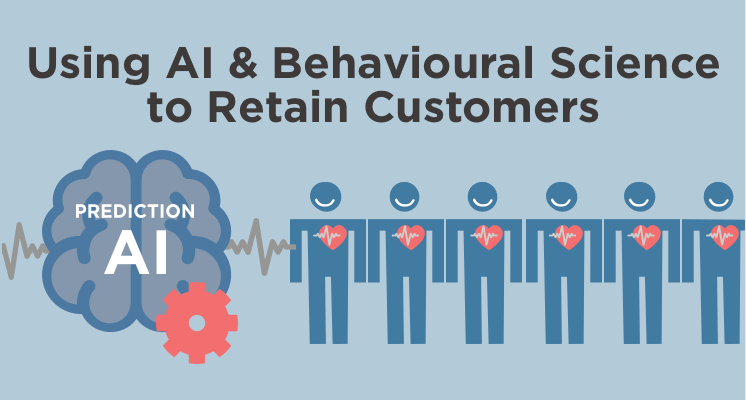Why is customer retention important?
We seem to have been having the conversation about customer retention for many years now. You know the drill…retaining existing customers is less expensive than acquiring new ones, and satisfied customers are also more likely to refer others to the business. The message hasn’t changed – it’s just become even more critical. When times are tough, businesses may not have the resources to invest in marketing and customer acquisition. In highly volatile and competitive markets, we must elevate our retention strategies and deliver them with rigour and accuracy.
How to approach Retention
While there is no silver bullet to reducing customer churn, there is a proven approach that leverages AI, Big Data and Behavioural Science. It begins with accurate prediction, but that’s only the beginning of the story. Once you know who is going to leave, you need to take specific actions immediately to retain those customers before they walk out the door, taking their potential lifetime value with them.
This is a real application here for AI and Big Data to work in lockstep with behavioural science methodologies. Retention messaging is very different to traditional marketing or sales messaging. Neuroscience and customer behaviour psychology drive the design of service messages to target at-risk customers with the objective of shifting their behaviour from leaving to remaining as a customer, feeling more comfortable with their relationship with the organisation and brand.
Unfortunately, the ‘go to’ tactic for large enterprises is to reuse marketing material for retention which is the wrong approach. If at-risk customers smell a whiff of marketing, the retention messages fail. When a customer is on the verge of leaving, the last thing they need to hear is more about us, our products and how good we think we are. It is akin to trying to coax someone ‘off a ledge’ by talking all about yourself.
Behavioural science, including neuroscience and customer behavioural psychology, can be used to inform the design of service messages to target at-risk customers. By understanding the factors that contribute to customer risk, such as stress, anxiety, or financial insecurity, designers can also create tailored messages to address these specific issues. Further, by utilising expert resources, who understand how the brain processes information and how customers make decisions, designers can create messages that are more likely to be noticed, understood, and change the decisions of at-risk customers
There are critical factors to the successful implementation of an integrated AI and behavioural science approach.
- Applying insights from neuroscience and behavioural psychology to design is a complex task that requires expertise in both fields.
- You can’t just run one cycle of prediction. Customer sentiment and circumstances change constantly. The key is a systematic approach to continuously collect data, assess and reassess individual customer churn risk. Then reach out to those who need attention every week.
- Measurement is everything – what is measured, matters! If you want to be confident your retention messages are hitting the mark they must be measured against control groups and refreshed regularly. The performance of the whole program must be constantly monitored and reported to measure return on investment.
Conclusion
Businesses have finite resources, so growth is a balance between spending money retaining existing customers and investing in hunting for new customers. In turbulent times, retention is the safer investment, the outcome is more certain when you leverage AI, your data and behavioural science.
The intersection of behavioural science and AI is important as it allows for the development of AI and treatment systems that better understand and predict human behaviour. This can lead to the creation of more effective and user-friendly solutions, as well as the ability to better target and personalise services and marketing.
By: Libby Dale, Co-Founder, SmartMeasures










